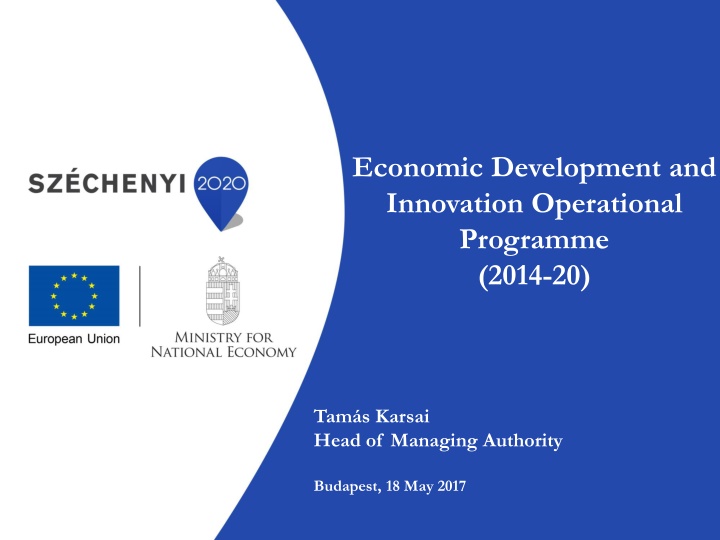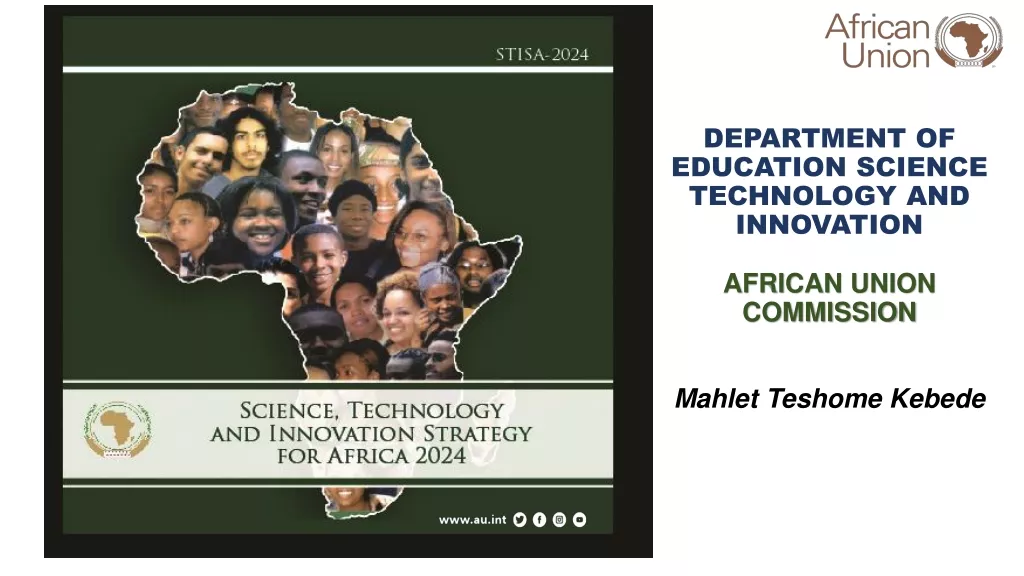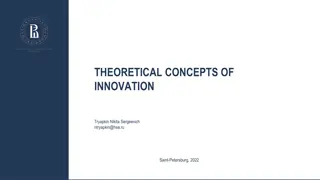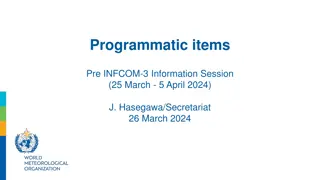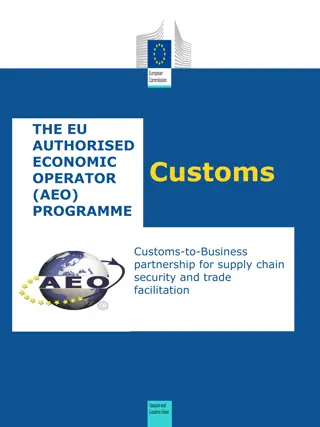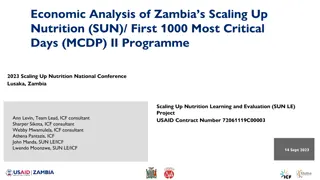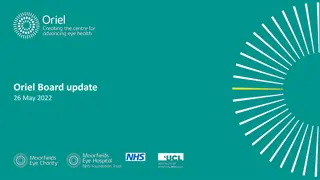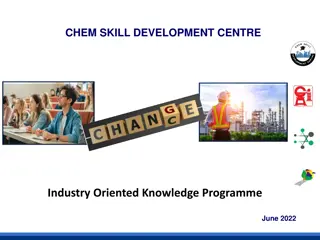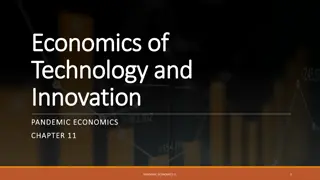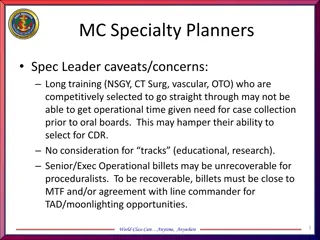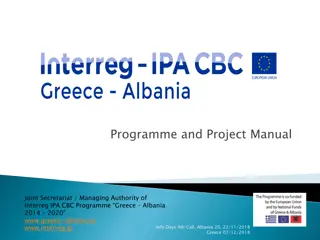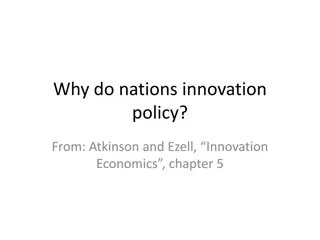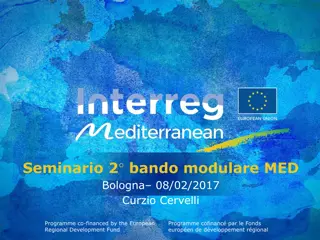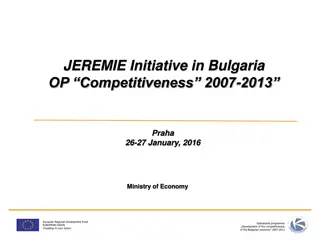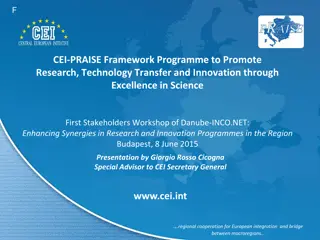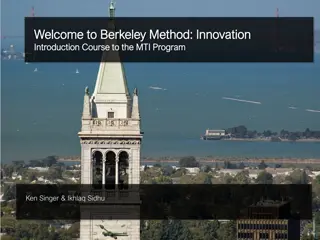Economic Development and Innovation Operational Programme Overview
This presentation provides a comprehensive overview of the Economic Development and Innovation Operational Programme (2014-20) in Hungary, highlighting its priorities, financial instruments, major projects, lessons learned, challenges, and the institutional evolution. It covers key areas such as SME support, research and innovation, ICT, tourism, energy, employment, and training, showcasing the country's strategic focus on economic growth and innovation.
Download Presentation

Please find below an Image/Link to download the presentation.
The content on the website is provided AS IS for your information and personal use only. It may not be sold, licensed, or shared on other websites without obtaining consent from the author.If you encounter any issues during the download, it is possible that the publisher has removed the file from their server.
You are allowed to download the files provided on this website for personal or commercial use, subject to the condition that they are used lawfully. All files are the property of their respective owners.
The content on the website is provided AS IS for your information and personal use only. It may not be sold, licensed, or shared on other websites without obtaining consent from the author.
E N D
Presentation Transcript
Economic Development and Innovation Operational Programme (2014-20) Tam s Karsai Head of Managing Authority Budapest, 18 May 2017
Content of the presentation General overview about the Operational Programme Evaluation of the institutional background - organisation of MA; State of play; Introduction of priorities - measures Financial instruments; Major Project ELI ALPS Lessons learned Challenges, benefits, success stories
Launching of the New Programme Hungarian OPs 2014-2020 Name of the Operational Programme million EUR Economic Development and Innovation Operational Programme (EDIOP) 8 813 Competitive Central-Hungary Operational Programme 927 Territorial Operational Programme (TOP) 3 971 Integrated Transport Development Operational Programme 3 920 Environment and Energy Efficiency Operational Programme 3 785 Human Resources Development Operational Programme Public Administration and Services Operational Programme Rural Development Programme Hungarian Fisheries Operational Programme OP for Supporting Socially Disadvantaged Persons + direct Single Area Payment Scheme Total 3 070 935 4 174 51 111 7 643 37 400 3
Economic Development and Innovation OP Priorities 5. and 6. 4. Energy 226 M EUR 7.Tourism 361 M EUR 1. SME 1582 M EUR 2. R&I 1688 M EUR 3. ICT 455 M EUR Employment and training 2150 M EUR R&I Competitive ICT sector Digital economy Digital catching-up Broadband Employment programmes Trainee programmes Flexibility at work Training Capacity building Modern business infrastructure Entrepreneurship Clustering, access to foreign market infrastructure and capacity Business R&I Strategic R&I cooperation Energy efficiency and renewable energy Preservation of natural and cultural heritage 8. Financial Instruments 2352 M EUR 4
Institutional Structure Evolution of the institutional background managing EU Funds in Hungary 5
2007-2013 2004-2006 2014-2020 Ministry OP 1. Managing Authority National Development Agency Ministry Ministry OP 3. Managing Authority Prime Minister s Office (Central coordinating body) OP 2. Managing Authority Ministry Intermediary Body OP 1. Managing Authority Ministry Intermediary Body OP 2. Managing Authority Ministry Intermediary Body OP 3. Managing Authority Intermediary Body Body Intermediary Body Body Intermediary Body Body Intermediary Intermediary Intermediary Intermediary Body Intermediary Body Intermediary Body Intermediary Body Intermediary Body Intermediary Body Intermediary Body Intermediary Body Intermediary Body 6
Role of Ministry for National Economy Central coordinating body between MAs Prime Minister s Office Providing common IT system for all calls for proposals Ministry for National Economy Competitive Central- Hungary OP EUR 927 million Budapest, Pest county Territorial OP EUR 3 971 million Counties, capital of counties Economic Development and Innovation OP EUR 8 813 million Convergence regions MA ( incl. IB) MA (incl. IB) 7
Organizational structure of the EDIOP Managing Authority Deputy State Secretary for Economic Development Programmes Managing Authority Financial and Monitoring Dep. of Priority Projects Department of Operational Management Department of Program Coordination Department of Finance and Monitoring Project Management (I) decision making, contracting Project Management (II) Reimbursement Department of Strategy Regulatory and Audit Dep Department of Financial Instruments Project Management (IV) Complaint management, irregularities Project Management (III) On the spot controls Department of Information Service and Public Relations IT and Support Department Project management Ex IB Programme management 8
State of Play Committed and disbursed funds 9
State of Play Committed and disbursed funds Priorities Total budget Submission Commitment Disbursement M EUR number M EUR number M EUR M EUR 1 582 9 310 1 721 3 037 526 306 EDIOP-1: SME 1 688 4 125 2 643 460 860 659 EDIOP-2: R&I 455 628 362 146 204 100 EDIOP-3: ICT 225 126 8 - - - EDIOP-4: Energy 1 713 2 747 1 396 923 1 255 203 EDIOP-5: Employment 437 5 188 5 188 169 EDIOP-6: Training 360 97 358 29 118 70 EDIOP-7: Tourism EDIOP-8: Financial Instruments Total 2 353 3 2 033 3 2 033 475 8 813 17 041 8 709 4 603 5 184 1 982 10
Introduction of the priorities 1-7. (non-refundable grants) 11
Introduction of priorities 1. Priority 1. SME development Capacity building with the special focus on: manufacturing industry and less developed micro regions; Modern business infrastructure (logistic centres, industry parks, incubators) Entrepreneurship (mentoring) Supporting networks: Cluster development, supplier programme; Access to foreign market Measures Priority 2. Research, technology development and innovation Business R&I - Supporting R&I activities at enterprises Strategic R&I cooperation R&I infrastructure and capacity (Universities, Research centres, Public institutes with R&D activities ) Measures 12
Introduction of priorities 2. Priority 3. ICT development Competitive ICT sector assisting ICT companies to access foreign market; Digital economy; Digital catching-up; Broadband development; Measures Priority 4. Energy Measures Improving energy efficiency of buildings by using renewable energy 13
Introduction of priorities 3. Priority 5. Employment Access to employment for job seekers and inactives Sustainable labour market integration of youth - Youth Guarantee Adaptability of workers and companies Measures Priority 6. Competitive workforce Life long learning Adapting vocational and adult training systems to labour market needs Measures Priority 7. Tourism National Castle and Fortress Programme; Infrastructural development of active touristic networks; Complex tourism development of health resort; Development of religious cultural heritages, National Parks and world heritages sites; Measures 14
Indicative proportion of financial instruments (Larger budget compared to 2007-13) TO 3 SME access to finance 726 m EUR 2014-20 2 352 m EUR TO1 R&I financial programmes for enterprises 652 m EUR TO 2 ICT services, Broadband development 306 m EUR Energy efficiency for enterprises and for households 568 m EUR TO 4 2007-13 727 m EUR TO 8 Employment programmes, social enterprises 100 m EUR 16
Institutional background for the management of financial instruments 2/1 Thematic policy responsibles Managing Authority at MNE* Prime Minister s office Appointment of MFB by law Hungarian Development Bank Financial instruments: Loan, combined products (grant+non refundable), VC Sales network: Info Points Final beneficiaries 17 * Ministry for National Economy
Financial Instruments Combined Instruments Venture Capital Loan Instruments National Technology and IP VC Programme Supporting R&D&I activity at enterprises Supporting R&D&I activity at enterprises TO 1 (R&D) S3 VC Programme National Equity Fund Specialized seed and pre-seed VC for new ICT SMEs ICT development at enterprises TO 2 (ICT) Broadband development Capacity building at SMEs SMEs' competitiveness (launched in May 2016) Irinyi VC programme (industry focus) TO 3 (SMEs) Medium sized enterprises in food processing industry Energy efficiency of buildings TO 4 (Energy) Energy efficiency developments with renewable energy sources Energy efficiency of SMEs TO 8 Employment growth (Employment) ) 18
ELI-ALPS phased major project in Szeged -2/1 Basic information Phase Approved budget (mEUR) Status Intensity rate:100% Beneficiary: ELI-HU Research and Development Non- profit Ltd. Preparation phase: 2011-2013 Implementation: 01.01.2013 30.06.2019 Total budget: 231.4 mEUR Phase 1. 2007-13 (EDOP) 97.9 Finished Phase 2. 2014-20 (EDIOP) 133.5 In progress Current status Building and infrastructure works completed: 5 buildings (total 24 462 m2)in 10 hectares are ready Roads, public utilities and a rainwater pond in 6.6 hectares, 3.5 km long water channel and sewage pipes Research technology: Procurement and manufacturing of the laser systems progress at good pace. Instalment of laser systems is scheduled to start in Q2 2017 and finish in Q4 2018. ELI ERIC: Setting up the responsible organization for joint operation of 3 ELI projects (CZ, RO, HU) is in progress at expert level
ELI-ALPS phased major project in Szeged -2/2 http://www.eli-alps.hu/?q=en
Lessons learned Challenges, benefits, success stories from the past 10 years 22
Lessons learned challenges, benefits from the past 10 years -1. Moving toward market close innovation; Supporting small scale innovation - Increased the willingness for innovation - SMEs realized that they have innovative activities; Low level at willingness of cooperation among business actors - Initiating joint R&I projects cooperation between research and business sector; R&D&I Issue of large enterprises: 2007-13: Last period for supporting large enterprises at general level; 2014-20: Large enterprises are eligible at specific topics; Complex development of projects: modernisation, training, access to foreign market ; Instead of general SME development programmes focusing on specific sectors, topics: o Manufacturing industry; o Job creation at less developed areas; o Initiating SMEs to implement Industry 4.0 solutions; o SME internationalisation access to market; infrastructure, building, technology Enterprise development 23
Lessons learned challenges, benefits from the past 10 years -2. Modern business infrastructure Logistic infrastructure, industry parks, incubators: no need for new infrastructure but upgrading and widening their service level; Change of attitude: moving from non-refundable grants toward refundable instruments; Start using combined instruments; Financial instruments E-administration, On-line communication; Less paper, decreasing the rejection rate; IT background Joint management of ERDF and ESF financed programmes is a challenge; Integration of ESF Introducing simplified procedure: well defined call for proposals; Project selection Innovation content of the project (NRDIO, National IPR Office ); Market price assessment 3 bids, documentation of price assessment; Suitability of project implementation location; Verification of SME status; Audit 24
Thank you for your kind attention! Ministry for National Economy Managing Authority for Economic Development Programmes
